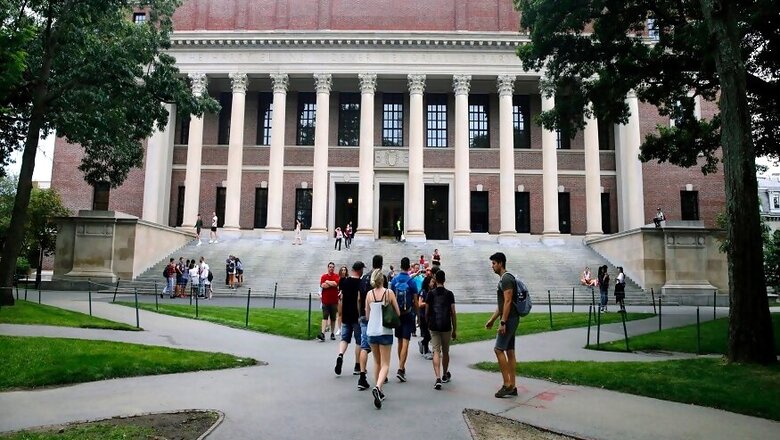
views
With uncertainties looming large over how the upcoming academic year will pan out amid the pandemic, the United States on Monday announced that international students would have to leave the country or transfer to another school/college if their schools were to offer only online classes this fall.
“The US Department of State will not issue visas to students enrolled in schools and/or programs that are fully online for the fall semester nor will U.S. Customs and Border Protection permit these students to enter the United States,” the Department of Immigration and Customs Enforcement (ICE) said.
Students already in the US who are enrolled in such programs must depart the country or take other measures, such as transferring to a school with in-person instruction to remain in lawful status. If not, they may face immigration consequences including, but not limited to, the initiation of removal proceedings, it added.
Meanwhile, the fresh guidelines stated that students who are enrolled in schools holding normal in-person classes are allowed to stay but they can only take a maximum of one class or three credit hours online.
Nearly 11 lakh international students are in the US as of 2018-19 – making up for roughly 5.5 per cent of the total enrollment in higher education institutes across the country- the Open Doors report 2019.
Of these, 8,72,214 international students were enrolled in universities while the remaining were on Optional Practical Training (OPT). Status of international students currently in the US on OPT would remain unaffected only ‘if they make normal progress’.
China and India account for 52.1 per cent of all the international students in the US. India is the second-highest source of foreign students in the US after China and had over 2 lakh students in the country as of 2018-19. India students in the US account for over 18 per cent of the total.
Of these, over 1.17 lakh Indian students were enrolled in US universities while the remaining were on OPT. Though the figure may have increased this year, the difference may not be too wide given the annual trend on enrollments.
Any of these students currently enrolled in programs that are likely to be taught online this fall will have to return home unless they transfer to a school 'with in-person instruction to remain in lawful status.'
Meanwhile, the students who are enrolled in schools planning to operate under a hybrid system (a mix of in-person and online classes) in the fall, will be allowed to remain in the country and take more than one class or three credit hours online provided that their school certifies- "the program is not entirely online and the student is taking the minimum number of online classes required to make normal progress in their degree program."
These exemptions won’t apply to F-1 students in English language training programs or M-1 students, who are not permitted to enrol in any online courses.
However, if a school changes its operational stance mid-semester, and as a result, a non-immigrant student switches to only online classes or changes their course selections, ending up in an online course load, the foreign student will have to leave the country as per the protocol. These guidelines will affect the newly admitted students as well who are supposed to begin programs this fall.
Nearly 2.7 lakh students had enrolled in the US in 2018-19. This figure has remained over 2 lakh since 2008-09 and even touched 3 lakh in 2015-16.
Even as US embassies and consulates remain shut in most countries, international students enrolled in programs which will only be instructed online in the fall and will not get a visa even when the embassies return to normal operations.
And even if a student gets a visa and arrives on campus for a hybrid program, they will have to leave the country if their program becomes entirely online in the middle of the semester.




















Comments
0 comment